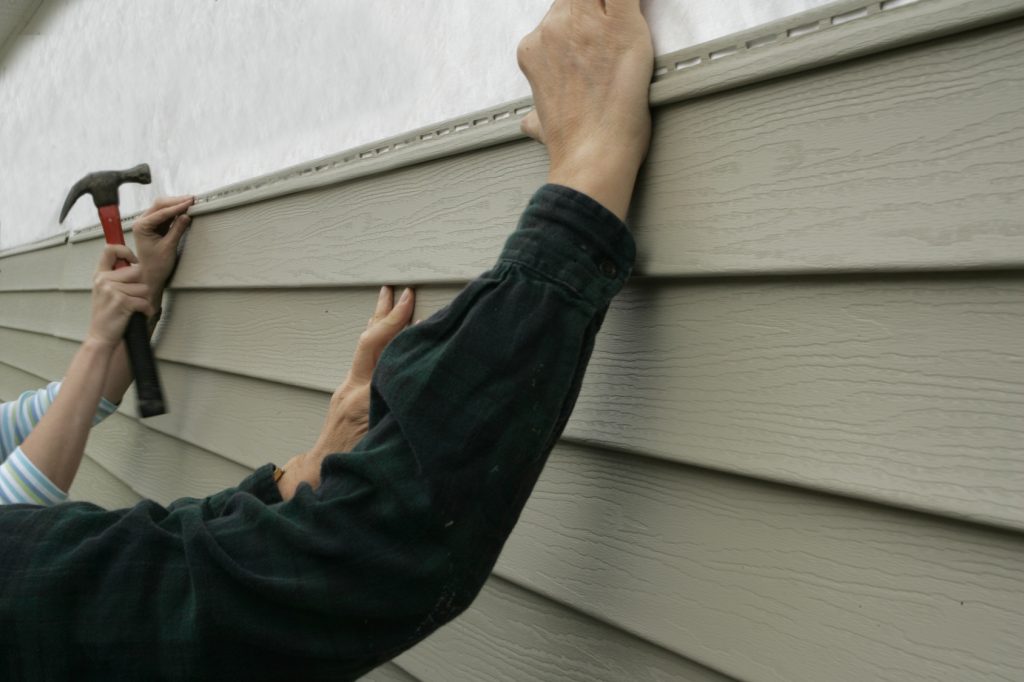The most critical decision that any homeowner has to make is to choose the best siding materials for house projects. Not only does siding protect your home from the elements, but it also defines its curb appeal and long-term value.
As a homeowner, you can find a lot of siding materials for houses available in the market. Choosing the best among all the available options can be challenging. Below, we break down the top 5 home siding materials—vinyl, fiber cement, wood, aluminum, and brick—exploring their advantages and disadvantages in detail.
1. Vinyl Siding
Vinyl is among the most popular siding options vinyl buyers choose, primarily for its affordability and versatility.
Pros of Vinyl Siding
- Cost-Effective: Vinyl is one of the least expensive siding materials for house projects, making it ideal for budget-conscious homeowners.
- Variety of Designs: It comes in numerous colors, patterns, and textures, some even mimicking wood grain, allowing flexibility in design.
- Low Maintenance: Vinyl doesn’t require painting or sealing. A quick wash with soap and water restores its appearance.
- Resistant to Pests and Rot: Vinyl is not susceptible to termites or rot when exposed to moisture, unlike wood.
Cons of Vinyl Siding
- Durability Issues: Vinyl can crack in very cold weather and warp under extreme heat.
- Fading Over Time: Darker shades may fade after years of sun exposure, leading to uneven color.
- Appearance: While improved, vinyl can still look less authentic than natural siding materials.
2. Aluminum Siding
When evaluating metal siding materials, aluminum stands out as the top choice. An aluminum-sided house not only looks sleek but also offers unmatched resilience.
Pros of Aluminum Panel Siding
- Durability: Aluminum is naturally resistant to rust and corrosion, making it long-lasting even in humid or coastal climates.
- Fire and Pest Resistant: Unlike wood, aluminum is non-combustible and insect-proof, offering extra safety.
- Low Maintenance: Requires little upkeep beyond occasional washing. No need for painting unless a design refresh is desired.
- Energy Efficiency: Insulated aluminum panel siding improves thermal efficiency, lowering heating and cooling bills.
- Lightweight and Easy to Install: Easier to handle than fiber cement or brick, which can reduce installation costs.
Cons of Aluminum Panel Siding
- Susceptible to Dents: Can dent if struck by hail or heavy objects, which may affect appearance.
- Fading Over Time: Without proper protective coating, aluminum may fade after decades of sun exposure.
- Design Limitations: While sleek and modern, aluminum offers fewer styles compared to vinyl or fiber cement.
- Verdict: Among all siding materials for houses, aluminum panel siding is often the best overall choice thanks to its balance of durability, minimal maintenance, and energy efficiency.
3. Fiber Cement Siding
Fiber cement blends cement, sand, and cellulose fibers, making it one of the most durable home siding materials available.
Pros of Fiber Cement Siding
- Exceptional Durability: Resistant to fire, pests, and rot, fiber cement is ideal for long-term protection.
- Design Flexibility: Can mimic wood, stone, or stucco, giving homeowners high-end aesthetics without the maintenance burden of natural materials.
- Paint-Friendly: Holds paint well, allowing homeowners to refresh their home’s look without worry about peeling.
- Weather Resistance: Handles harsh climates well, including heavy rain, snow, and high winds.
Cons of Fiber Cement Siding
- Higher Installation Costs: Fiber cement is more expensive than vinyl, both in terms of material and professional installation.
- Heavy Material: Its weight requires skilled labor and specialized tools, adding to installation time and costs.
- Maintenance: While durable, it still requires periodic repainting to maintain appearance.
4. Wood Siding
Those homeowners who give importance to classic aesthetic and natural beauty, wood is the best siding material.
Pros of Wood Siding
- Timeless Appearance: Wood siding adds warmth and character unmatched by most synthetic siding materials for houses.
- Customizable Finish: Can be painted or stained in virtually any color, giving endless design options.
- Eco-Friendly: As a renewable resource, wood is one of the more sustainable home siding materials.
- Insulating Properties: Provides natural insulation, helping improve energy efficiency.
Cons of Wood Siding
- High Maintenance: Requires frequent painting, staining, or sealing to prevent damage from weather exposure.
- Vulnerability to Pests and Rot: Susceptible to termites, carpenter ants, and decay if not properly maintained.
- Long-Term Costs: Although beautiful, the upkeep can make wood siding more expensive over time compared to alternatives like aluminum or vinyl.
5. Brick Siding
Brick remains one of the most durable and visually striking home siding materials.
Pros of Brick Siding
- Longevity: Brick siding is the longest-lasting siding material, as it can last for as long as 50 years if you take care of it.
- Fire Resistance: Completely non-combustible, offering superior protection against fire hazards.
- Weather and Pest Resistant: Brick doesn’t rot, warp, or attract pests, ensuring strong, consistent performance.
- Low Maintenance: Requires little more than occasional inspection for mortar damage.
- Curb Appeal and Value: Timeless charm that significantly boosts resale value.
Cons of Brick Siding
- High Initial Cost: Both materials and labor are expensive, making brick one of the priciest siding materials for house choices.
- Installation Challenges: Labor-intensive and time-consuming installation increases upfront investment.
- Limited Flexibility: Color and style options are more limited compared to vinyl or fiber cement.
Final Thoughts
When selecting from different home siding materials, the right choice depends on your budget, climate, and aesthetic preferences. Vinyl is best for affordability and variety, wood for natural beauty, and brick for timeless durability. Fiber cement offers a balance of strength and design versatility.
However, if you want a modern, low-maintenance, and energy-efficient solution, aluminum panel siding is arguably the best investment among today’s siding materials for houses.














